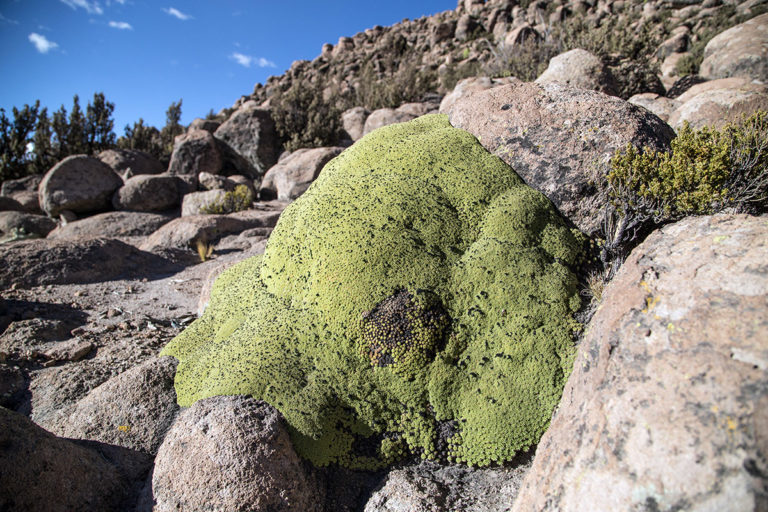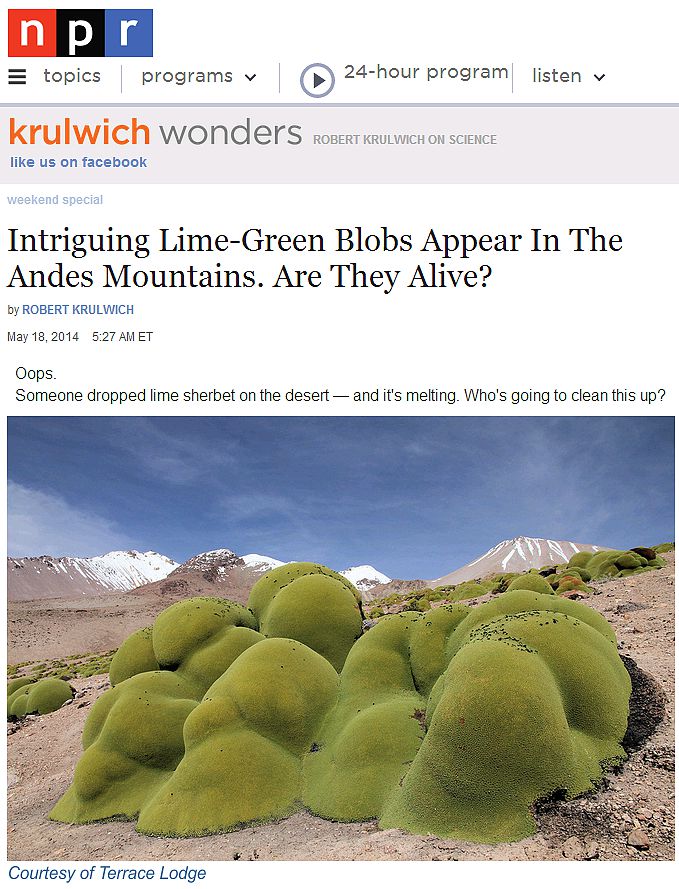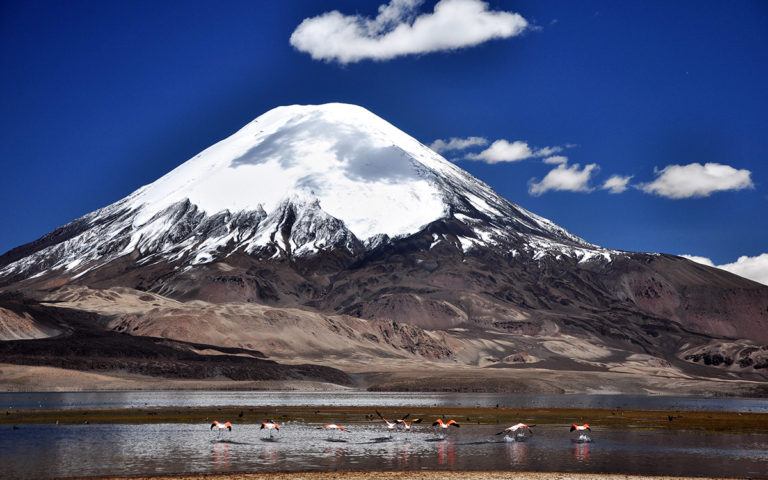About the Llareta (Azorella compacta) plant.
Yareta is well-adapted to high isolation rates typical of the Andes highlands and cannot grow in shade.
The plant prefers sandy, well-drained soils. Yareta is an evergreen perennial with pink or lavender flowers.
The self-fertile flowers are hermaphroditic and are pollinated by insects.
This mat grows near the ground where air temperature is one or two degrees Celsius higher than the mean air temperature. This temperature difference is a result of the long wave radiation re-radiated by the soil surface (which is usually dark gray to black in the Puna).
Llareta in the north of Chile
It can grow in nutritionally poor soils that are acidic, neutral, or basic (alkaline). The plant’s leaves grow into an extremely compact, dense mat that reduces heat loss.
Many yaretas are estimated to be over 3,000 years old. The yareta is estimated to grow approximately 1.5 centimeters (15 mm) per year. Although, traditionally harvested for fuel, its slow growth makes this practice non-sustainable.
Read more: NPR, National Public Radio In Washington, DC, USA,





